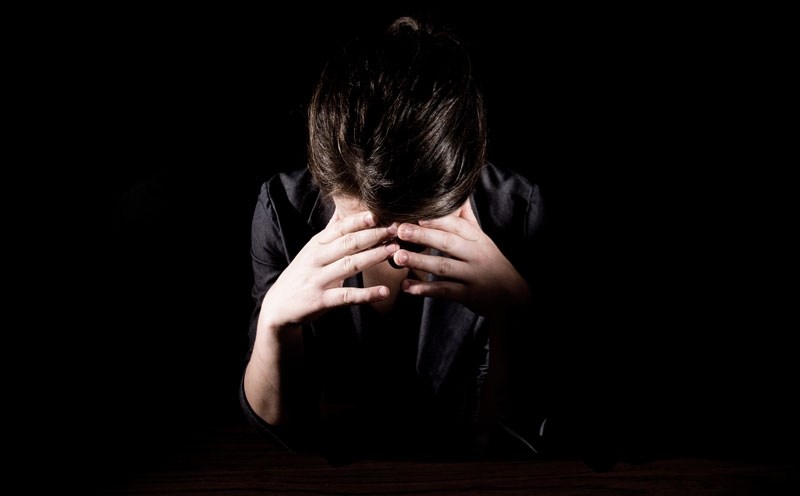Mara Grunau knows the math – for every one-per-cent increase in unemployment there is a similar increase in the suicide rate. But news of St. Albert’s recent spike in suicide attempts still came as a shock to the Centre for Suicide Prevention’s executive director.
On Monday, Community and Social Development (formerly known as FCSS), submitted a report to council outlining the community’s current state of mental health. The report showed that in the first three months of 2016 there was an average of one suicide attempt per day in St. Albert.
“If that number is accurate,” said Grunau, “that is beyond alarming.”
The statistic was compiled by the department through a variety of sources, including community partners, counsellors and the St. Albert RCMP, and is probably “in all fairness, modest,” says Scott Rodda, director of St. Albert Community and Social Development.
“We know there are people every day who are struggling,” he said.
Research has shown a strong link between economic recessions, unemployment and suicide. One study, published in 2009, found that for every one per cent increase in unemployment there is a 0.79 per cent increase in the suicide rate.
Stress of job loss or potential job loss can lead to an increase in mental health concerns, addictions, relationship strains and suicidal ideation, which can in turn lead to an increase in suicide attempts and completions. Middle-aged men make up a large percentage of this group.
“The turn in the economy in general challenges people’s resiliency and resolve,” said Rodda.
For the past 10 to 15 years, Alberta has experienced approximately 500 suicides per year (worse than almost every other province in Canada). In December, it was reported that the province was on track for 654 suicides.
The latest statistics only span from January to June 2015, but show a 30 per cent increase in the number of Albertans who took their own lives. There were 327 suicides reported in that timeframe, compared to 252 the year before.
Unfortunately it takes between 18 to 24 months to see the effects of a downturn play out, since that’s how long individuals typically take to exhaust their personal savings. Given the province hits that milestone this month, the numbers could continue to worsen says, Grunau.
Although regional statistics are hard to come by when talking about suicide, mental health professionals in the community have reported significant increases in the use of their services.
The number of patients treated by the St. Albert Mental Health Clinic went up 14 per cent last year.
Approximately 900 adults received addictions and mental health services at the AHS-run clinic from April 1, 2014 to March 31, 2015. That number went up to 1,032 during the same time period in 2015-16. The number of children (about 400) stayed the same.
“That kind of an increase is really reflective of what we’re seeing in virtually all of our programs (across Edmonton),” said Mark Snaterse, executive director for addictions and mental health in the Edmonton Zone.
The need for timely, low-cost mental health services has pushed River’s Edge Counselling to expand its sliding scale services fourfold – from 400 hours to over 2,000 by the fall.
A third master’s student will join the graduate level practicum program this June, while two others will begin to see patients in September.
“It’s a risk to make such a dramatic increase in this program,” said director Nicole Imgrund, “but we believe the demand is there.”
Imgrund says there’s no doubt in her mind that the recession is having a “significant and often devastating” impact on the mental health of Albertans.
“We receive calls on a daily basis from people experiencing high levels of stress and anxiety, as well as depression, and unhealthy coping, such as addictions,” she said.
To curb the number of suicide attempts in St. Albert, Rodda wants to train more community members to recognize the signs of poor mental health.
On Monday, council approved the use of one-time FCSS funding from the province ($147,027) to, among other things, offer more frequent training and workshops.
“The more trained, educated and aware community members and partners are the more likely timely resources will be able to reach vulnerable residents of St. Albert,” read the report.
Grunau agrees that the most important suicide prevention tool is community education and awareness, but that first individuals must address their own personal stigma towards suicide.
“An incredible proportion of the population will experience suicidality at some point,” she said. “We think people have to be in an extreme altered state to experience it.”
She also tells Albertans to be bold when faced with someone with mental health concerns: “It’s very un-Canadian of us to ask people directly, but if we are concerned with someone in our world we need to step up and say: ‘Are you thinking about suicide?”
If the answer is yes, don’t panic, says Grunau. It’s not up to you to solve their problem, simply to connect them with help. Call the Edmonton Distress Line at 780-482-4357 or toll-free at 1-800-232-7288. It is answered 24/7 by trained volunteers.
If the answer is no, you might be a little embarrassed, but at least that person knows you care about their well-being.




